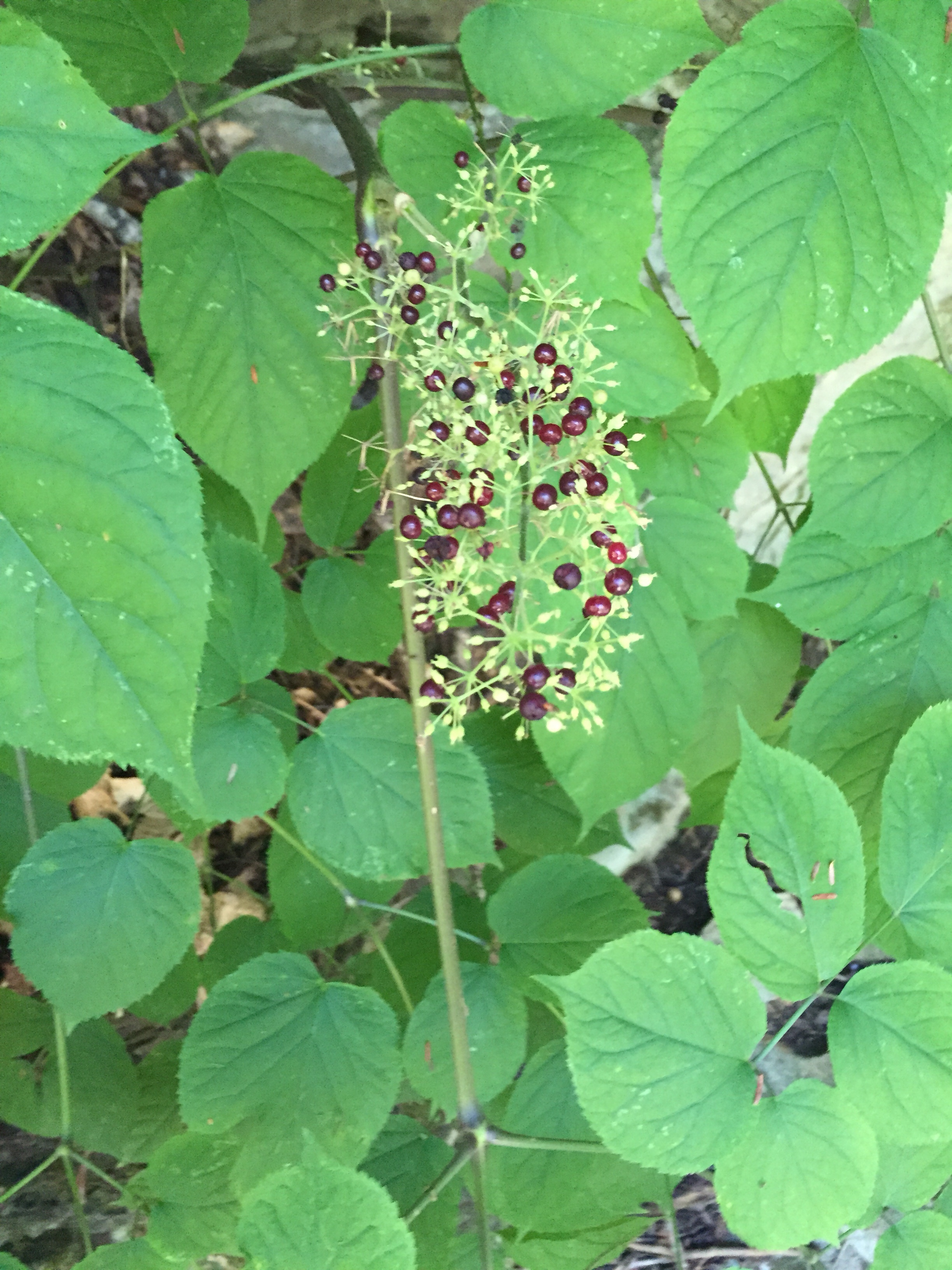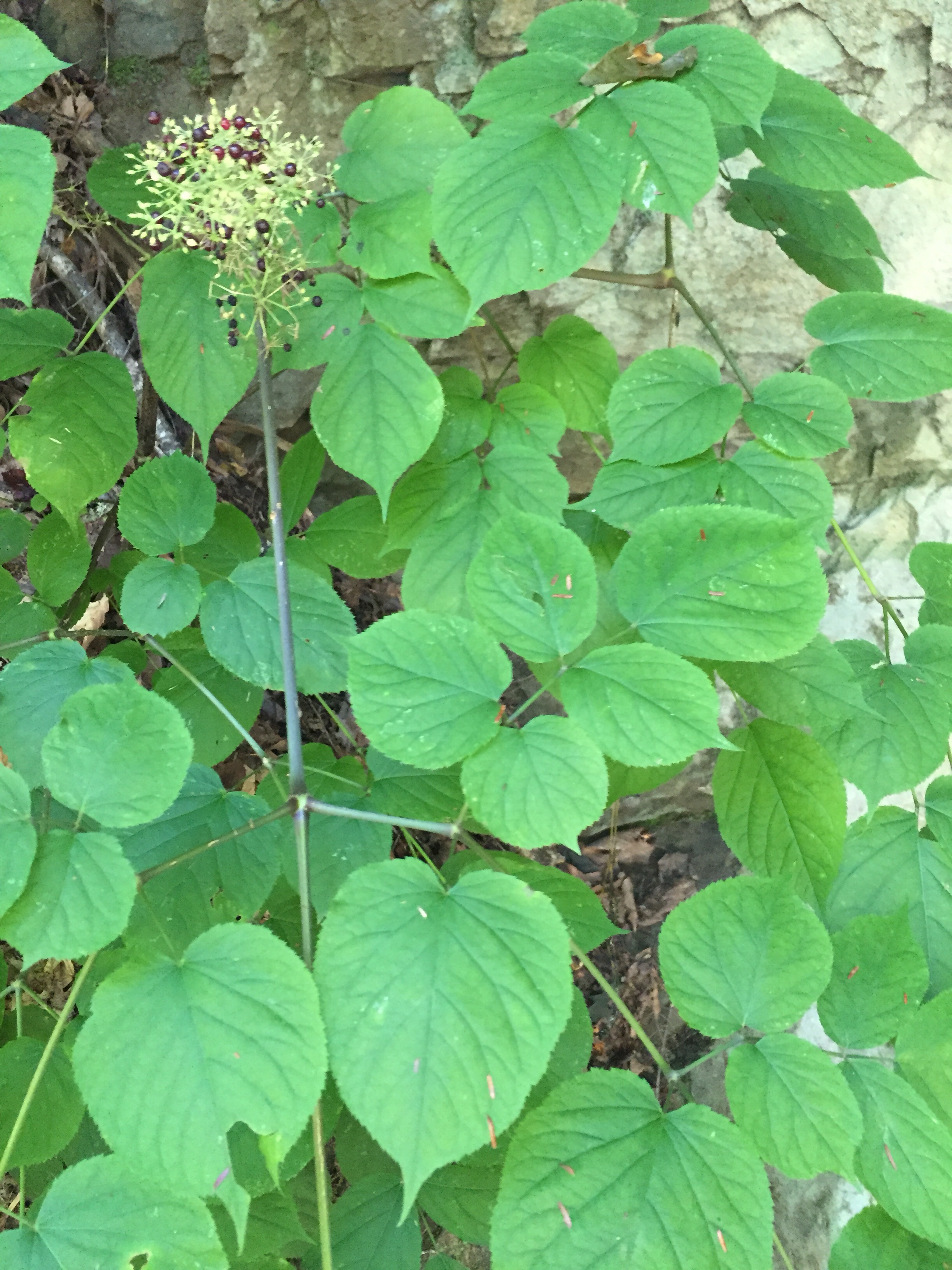
 Aralia racemosa (and aralia nudicaulis) are plants that grow in the woods around here, and are used in the traditional medicine of eastern Kentucky. The plant is known inEnglish as Spikenard, which is the name of an aromatic plant that is mentioned in the bible. The people who gave it this name had never seen Nardostachys (the real spikenard), but they knew its name and were unaccountably fond of naming plants after other plants. Some authors refer to this plant as ‘wild sarsaparilla’ or ‘spiceberry’, which is even worse since the real sarsaparilla (Smilax spp.), which is also wild, grows right next to it in the woods, as does the real spiceberry (Lindera benzoin), which unlike aralia, has spicy berries.
Aralia racemosa (and aralia nudicaulis) are plants that grow in the woods around here, and are used in the traditional medicine of eastern Kentucky. The plant is known inEnglish as Spikenard, which is the name of an aromatic plant that is mentioned in the bible. The people who gave it this name had never seen Nardostachys (the real spikenard), but they knew its name and were unaccountably fond of naming plants after other plants. Some authors refer to this plant as ‘wild sarsaparilla’ or ‘spiceberry’, which is even worse since the real sarsaparilla (Smilax spp.), which is also wild, grows right next to it in the woods, as does the real spiceberry (Lindera benzoin), which unlike aralia, has spicy berries.
.
.
.
Traditionally, aralia is used as a tonic, something like what the modern herb industry might call an adaptogen. More specifically, it is used to improve digestion and availability of energy, and is often considered to be a little bit helpful for most things. Pharmacologically, it contains steroidal saponosides, which may improve the feeling of alertness while reducing a wide variety of inflammation-related symptoms, and aromatic acids which might improve secretion of digestive juices. It also contains dozens if not hundreds of other compounds, some well known from other plants, many of them little studied or understood.
.
.
.
In my practice, i usually use this plant (specifically an extract from the root) along with other plants to help support the endocrine system. Like most of our alkaloid-rich woodland roots, it’s not generally for use during pregnancy, though it can have a role in promoting fertility and in supporting labour.